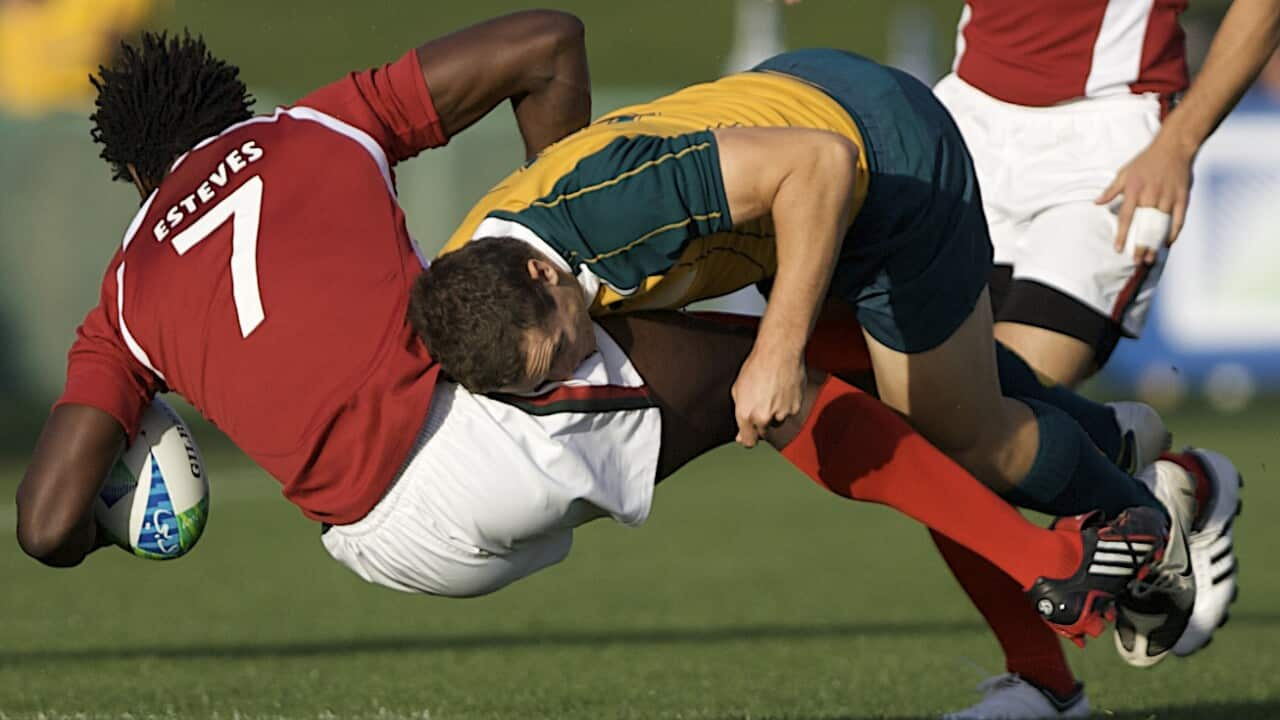Australia’s national rugby union team’s colours are green and gold – you don’t have to be a sports fan to know that.
But not everyone sees the Wallabies' jerseys that way.
For those who are colourblind, the gold colour may appear red – the colour of Portugal’s national rugby team – making it difficult to differentiate between players of the two teams.
Because of this, the Wallabies have agreed to switch their trademark gold jerseys for white ones during a game against Portugal later this year.
The uniform change is in line with guidelines introduced by World Rugby in 2021, designed to help people with colour vision deficiency (CVD.)
In order to make the sport more accessible, the governing body identified seven areas to address: kit clashes, equipment colours, stadium and ticket information, TV coverage, workplace issues and external information such as sponsorship and emergency services.
Making sporting codes inclusive
Perth business development manager Peter Taliangis loves watching sport, especially cricket and AFL. He is also colourblind.
He's keen for sporting codes to be more inclusive.
"Despite the fact that various colourblindness impacts so many, it’s not really on the radar," Mr Taliangis said.
But he's not convinced white jerseys are the best solution for everyone.

Australia's rugby union team, the Wallabies, line up ahead of a match against South Africa in Sydney last year. Source: AAP / Dean Lewins
"A red to yellow/gold isn’t an issue for me, but it would be for others," Mr Taliangis said, adding that he's always found white items tricky to make out.
“I used to play cricket and the white ball was harder to see for sure, and I find the white jumpers really wash players out. I don’t love it."
Mr Taliangis suggested removing solid colours from sporting uniforms to make it easier to distinguish between teams.
"Logos, numbers, patterns, different sections of colour is also helpful. The Brisbane Lions jumper, St Kilda jumper and West Coast Eagles jumpers are some of the better ones."

Peter Taliangis (pictured here with his father at an AFL match) enjoys watching sport but being colourblind can sometimes make it tricky to tell teams apart and make out certain objects. Source: Supplied / Peter Taliangis
"I love the Wallabies and will watch it regardless," he said.
Colour blindness is 'largely misunderstood'
While World Rugby's policy is currently non-binding, the organisation is aiming to ensure its guidelines are fully complied with at all of its competitions by 2025.
When World Rugby's guidelines were first released, Chairman of World Rugby Bill Beaumont, who lives with CVD, said colourblindness was “largely misunderstood and the challenges for those who play, coach, officiate and support our sport [are] often overlooked.”
Having a different awareness and understanding of colours can cause difficulties in many everyday situations, such as choosing and preparing food, gardening, sport, driving and selecting clothes to wear.
If a person's vision has not been taken into account when people exchange information, it can also alter the effectiveness of communication.
According to Colour Blind Awareness, a United Kingdom-based not-for-profit, approximately one in 12 men and one in 200 women are affected by CVD.
While most people with colourblindness, are born with it, people can acquire it throughout life due to a range of factors.
There are different types, and levels of severity, of colourblindness.
The three main types are protanomaly, which is specific to reds; deuteranomaly, which affects greens; and tritanomaly, which is an extremely rare condition that reduces sensitivity to blues.

